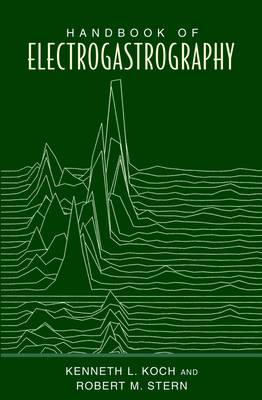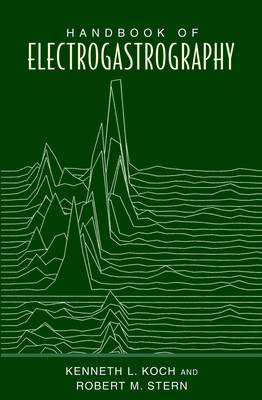
- Retrait gratuit dans votre magasin Club
- 7.000.000 titres dans notre catalogue
- Payer en toute sécurité
- Toujours un magasin près de chez vous
- Retrait gratuit dans votre magasin Club
- 7.000.000 titres dans notre catalogue
- Payer en toute sécurité
- Toujours un magasin près de chez vous
90,95 €
+ 181 points
Description
The Handbook of Electrogastrography is the first textbook dedicated to reviewing the physiology of gastric myelectrical activity and the measurement of this electrical activity with electrodes placed on the abdominal surface - the electrogastrogram. The Handbook is divided into three major sections. The first section (Chapters 1-3) focuses on the history of electrogastrography, electrical activity of the interstitial cells of Cajal, the cells from which gastric electrical rhythmicity emanates. The cellular level of gastric electrical rhythmicity provides an understanding of the physiological basis of the electrogastrogram signal.
The second major section of the book (Chapters 4-6) incorporates the practical aspects of recording a high quality electrogastrogram and approaches to the analysis of the electrogastrogram using visual inspection and computer techniques. This section focuses on the authors' combined experience of examining EGG recordings for more than sixty years. From this rich research and clinical experience, the clinical application of EGG recordings in an approach to patients with unexplained nausea and vomiting is described. Neuromuscular disorders of the stomach involving gastric dysrhythmias are reviewed.
The third major section of the book (Chapters 7-9) comprises many examples of gastric dysrythmias ranging from bradygastrias to tachygastrias and mixed dysrythmias. Current understanding of the mechanisms of gastric dysrhythmias is reviewed. Artifacts in the EGG signal, which may be confused with gastric dysrhythmias, are also presented.
The Handbook of Electrogastrography will be a valuable reference for physicians interested in recording gastric electrical activity in clinical practices or in clinical research. Gastroenterologists, internists, psychologists and others with an interest in gastric myoelectrical events will also find extensive and relevant information for recording and interpreting EGGs in the Handbook.
The second major section of the book (Chapters 4-6) incorporates the practical aspects of recording a high quality electrogastrogram and approaches to the analysis of the electrogastrogram using visual inspection and computer techniques. This section focuses on the authors' combined experience of examining EGG recordings for more than sixty years. From this rich research and clinical experience, the clinical application of EGG recordings in an approach to patients with unexplained nausea and vomiting is described. Neuromuscular disorders of the stomach involving gastric dysrhythmias are reviewed.
The third major section of the book (Chapters 7-9) comprises many examples of gastric dysrythmias ranging from bradygastrias to tachygastrias and mixed dysrythmias. Current understanding of the mechanisms of gastric dysrhythmias is reviewed. Artifacts in the EGG signal, which may be confused with gastric dysrhythmias, are also presented.
The Handbook of Electrogastrography will be a valuable reference for physicians interested in recording gastric electrical activity in clinical practices or in clinical research. Gastroenterologists, internists, psychologists and others with an interest in gastric myoelectrical events will also find extensive and relevant information for recording and interpreting EGGs in the Handbook.
Spécifications
Parties prenantes
- Auteur(s) :
- Editeur:
Contenu
- Nombre de pages :
- 244
- Langue:
- Anglais
Caractéristiques
- EAN:
- 9780195147889
- Date de parution :
- 16-10-03
- Format:
- Livre relié
- Format numérique:
- Genaaid
- Dimensions :
- 236 mm x 160 mm
- Poids :
- 547 g







